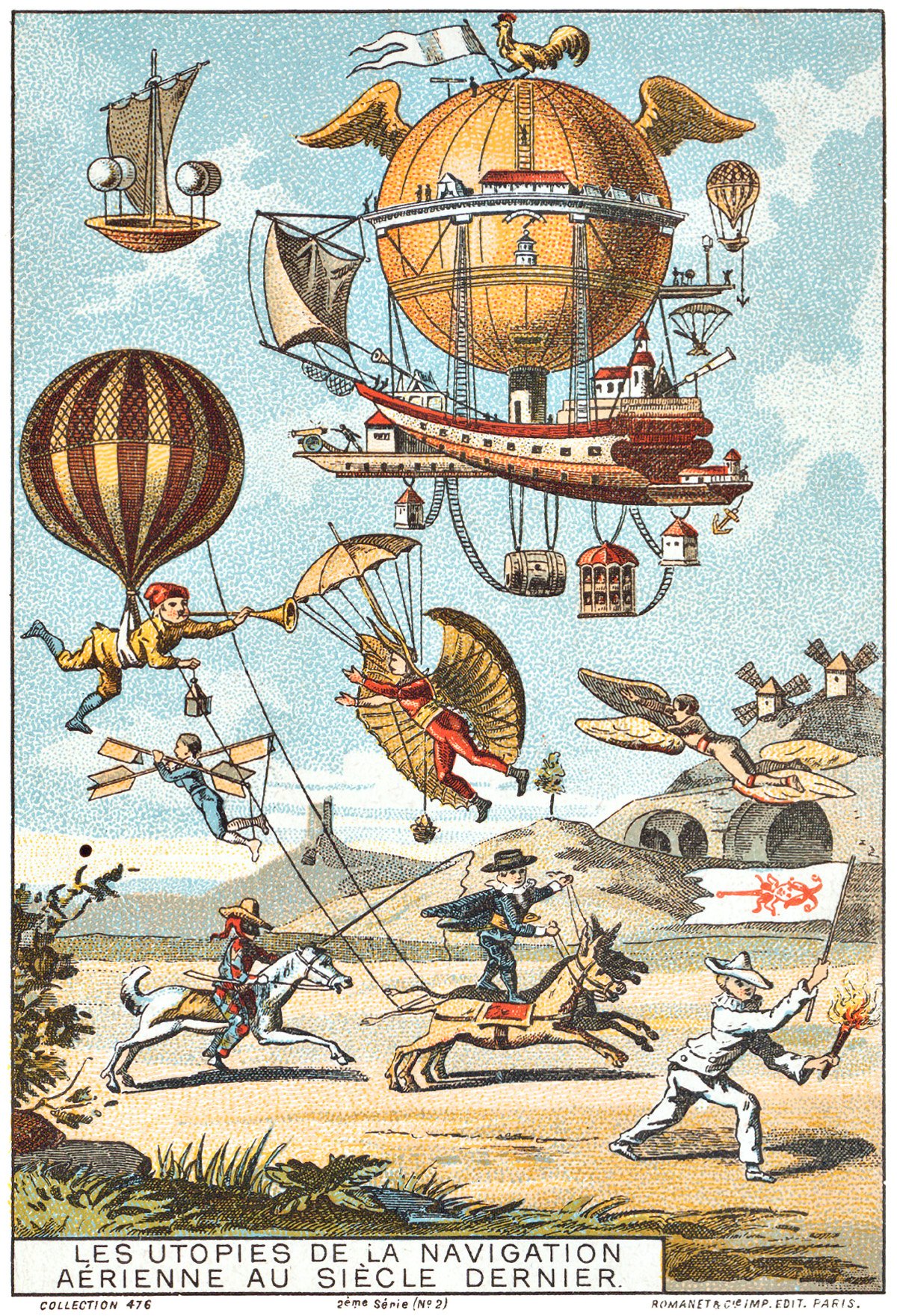Utopian Flying Machines of the Previous Centuries
Illustration of a French card from 1890 showing famous examples of flying machines from the nineteenth century. The caption reads Les Utopies de la Navigation Aérienne au Siècle Dernier, which means Utopian Flying Machines of the Previous Centuries.
Pictured above is a French illustration from 1890, showing a collage of French flying machine ideas from the previous few centuries. The caption reads Les Utopies de la Navigation Aérienne au Siècle Dernier, which means Utopian Flying Machines of the Previous Centuries. There are six ideas shown. Starting in the top left and moving clockwise, the first is Francesco Lana de Terzi's Aerial Ship from 1670. Next to this is the fictional La Minerve Airship by Étienne Gaspard Robert from 1803. Under this and on the right is Marques de Bacqueville's set of wings from 1742. To the right of this and in the middle is Nicolas Edme Rétif’s fictional Flying Man from his 1781 novel La Découverte Australe par un Homme-Volant, or The Discovery of the Austral Continent by a Flying Man. To the right of this is Besnier and his Flying Apparatus from the 1670’s. Lastly, just above this is a man hanging below a balloon, pulled by a pair of horses on the ground below. This last example is a satirical scene with characters from the commedia dell'arte, drawn in 1787 and titled Moyen Infaillible de Diriger les Ballons, or A Foolproof Way to Direct the Balloons. It was meant to be a satirical take on the progress of ballooning at the time.
I love illustrations like this, because they give us a window into a mindset from the past. This artist believed these six ideas were the most important events in the early history of French flight. He also chose to include both real and fictional examples, which adds a bit of whimsy and shows that fiction and art can influence reality. Taken together, it makes for an interesting mixture of ideas.
Check out other ideas for flying machines throughout history here.

